
Magento HubSpot CRM Sync: Features and Future Trends
What if you could recover 10% of your abandoned shopping carts? Magento HubSpot CRM Sync automates targeted campaigns and drives smarter sales decisions.
The article explores the features, tools, and future trends of Magento HubSpot sync.
Turn Your Store Data Into Revenue
Stop losing customers between channels. Sync Magento with HubSpot and watch conversions soar.
Items: 3 products
Key Takeaways
-
Syncing Magento with HubSpot boosts marketing and sales.
-
Core features automate workflows and personalize campaigns.
-
Get a complete checklist to prepare your store before syncing with HubSpot.
-
Clean data, plan field mapping, and test the integration.
-
Privacy laws, such as GDPR, impact Magento–HubSpot data sync.
What is Magento HubSpot CRM Sync?
Magento HubSpot CRM sync enables smooth integration. It is between your Magento store and HubSpot’s powerful CRM platform.
The sync allows customer and product data from Magento to flow into HubSpot. It helps you centralize and personalize your marketing and service efforts.
Syncing helps you create email campaigns and automate workflows based on customer behavior. It also helps track abandoned carts and analyze sales performance within HubSpot.
The integration supports contact segmentation and enhanced customer lifecycle management. Whether using a native extension or a custom API. Syncing Magento with HubSpot ensures that your store and CRM systems work in harmony.
The integration saves time and reduces manual entry. It also enhances customer engagement and retention across all touchpoints. It is perfect for scaling growth with intelligent marketing automation.
7 Key Features of Magento HubSpot Integration
Integration Superpowers
1. Customer & Order Data Sync
Magento stores rich customer and transactional data, including:
-
Names
-
Emails
-
Phone numbers
-
Shipping and billing addresses
-
Order totals
-
SKUs
-
Payment methods
The sync maps data to HubSpot contact and deals properties.
Benefits:
-
It helps create a unified view of the customer across platforms.
-
It enables sales teams to track each customer’s buying journey.
-
It supports marketing personalization based on past behavior.
2. Real-Time Syncing
Changes made in Magento reflect in HubSpot immediately or at defined sync intervals. These include customer registration and order placement.
Benefits:
-
It keeps your CRM data up to date for real-time campaigns.
-
It helps cut data entry errors and delays.
3. Abandoned Cart Recovery
HubSpot can capture cart abandonment events from Magento. It allows you to send timed email sequences to recover lost sales. These emails can include product names and direct checkout links.
Benefits:
-
It increases revenue by re-engaging high-intent users.
-
Automates a key aspect of eCommerce marketing.
4. Advanced Contact Segmentation
Magento data enriches your HubSpot contact profiles, allowing for precise segmentation. You can create lists based on the last order date or even specific product attributes.
Benefits:
-
It enables granular targeting for campaigns.
-
It also uplifts relevance and open and click rates in emails.
5. Product Catalog Sync
Sync your Magento product catalog, including title and SKU, to HubSpot. It is for use in dynamic emails and landing pages.
Benefits:
-
It simplifies campaign creation with real-time product data.
-
Gives sales teams immediate access to up-to-date inventory.
6. Revenue Attribution & Reporting
Associate each Magento order with a corresponding HubSpot deal. You can trace sales back to their original lead source. These include an ad campaign or an email marketing campaign. It gives clarity on ROI and funnel efficiency.
Benefits:
-
It helps track what marketing activities drive revenue.
-
Helps budget smarter and scale effective strategies.
7. Cross-Channel Marketing Support
With synced data, you can reach users on various channels, not only email. HubSpot allows Google Ads retargeting and Facebook Custom Audiences. It uses Magento customer behavior as the trigger.
Benefits:
-
It ensures a consistent and personalized experience across platforms.
-
Uplifts conversions through omnichannel touchpoints.
6 Magento HubSpot CRM Integration Tools
Find Your Perfect Integration Solution
Compare 6 powerful tools to connect Magento with HubSpot
1. Magenest
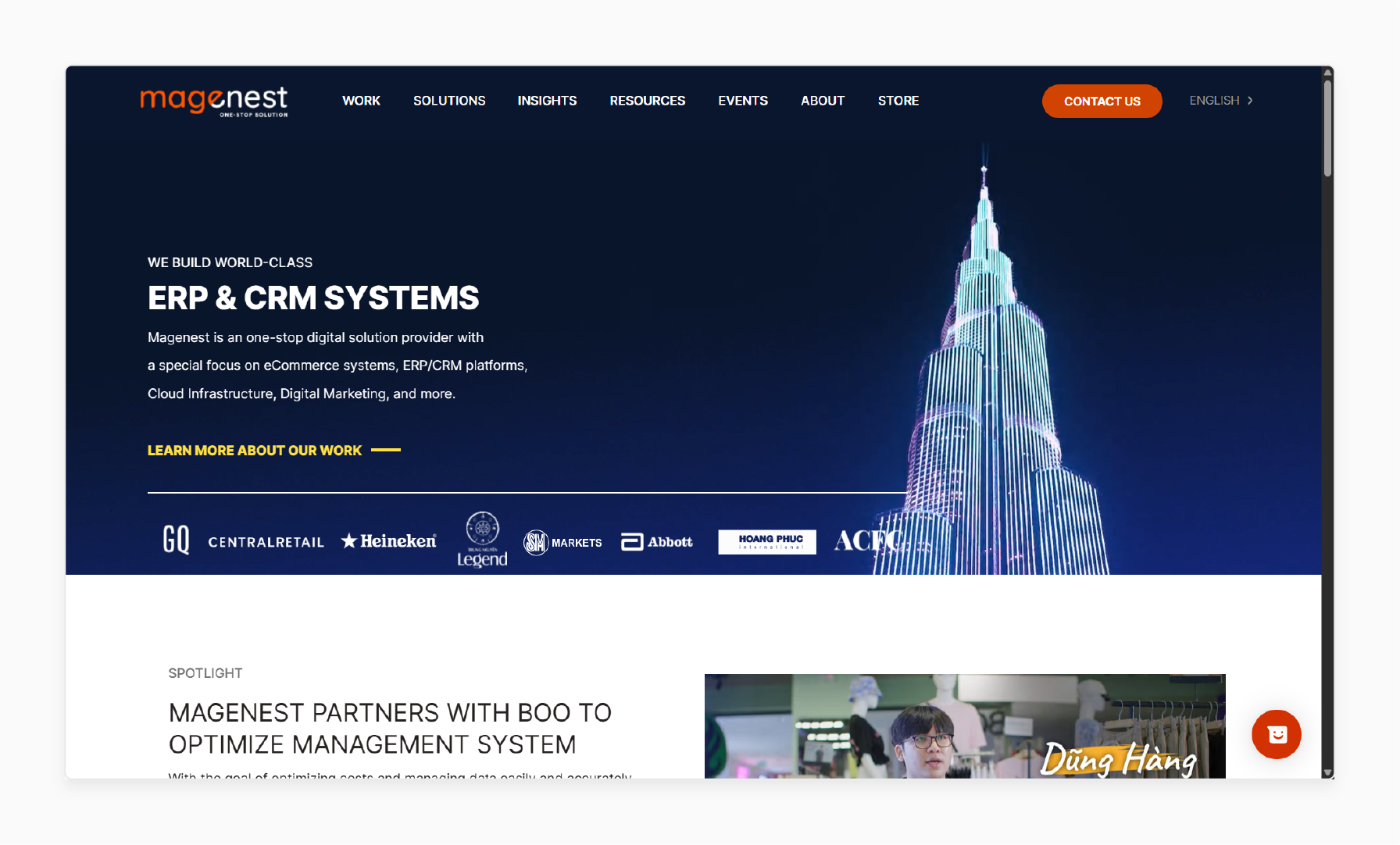
Magenest is a powerful extension that enables smooth integration between Magento and HubSpot. It syncs customer profiles and newsletters from Magento to HubSpot. It enables automated workflows based on those data points.
Key Features:
-
Sync of customers and orders
-
Abandoned cart recovery via HubSpot workflows
-
Sync of product catalog for email personalization
-
Custom field mapping
-
Smart list generation based on Magento segments
It is ideal for medium to large merchants seeking an integrated HubSpot experience.
2. Zapier
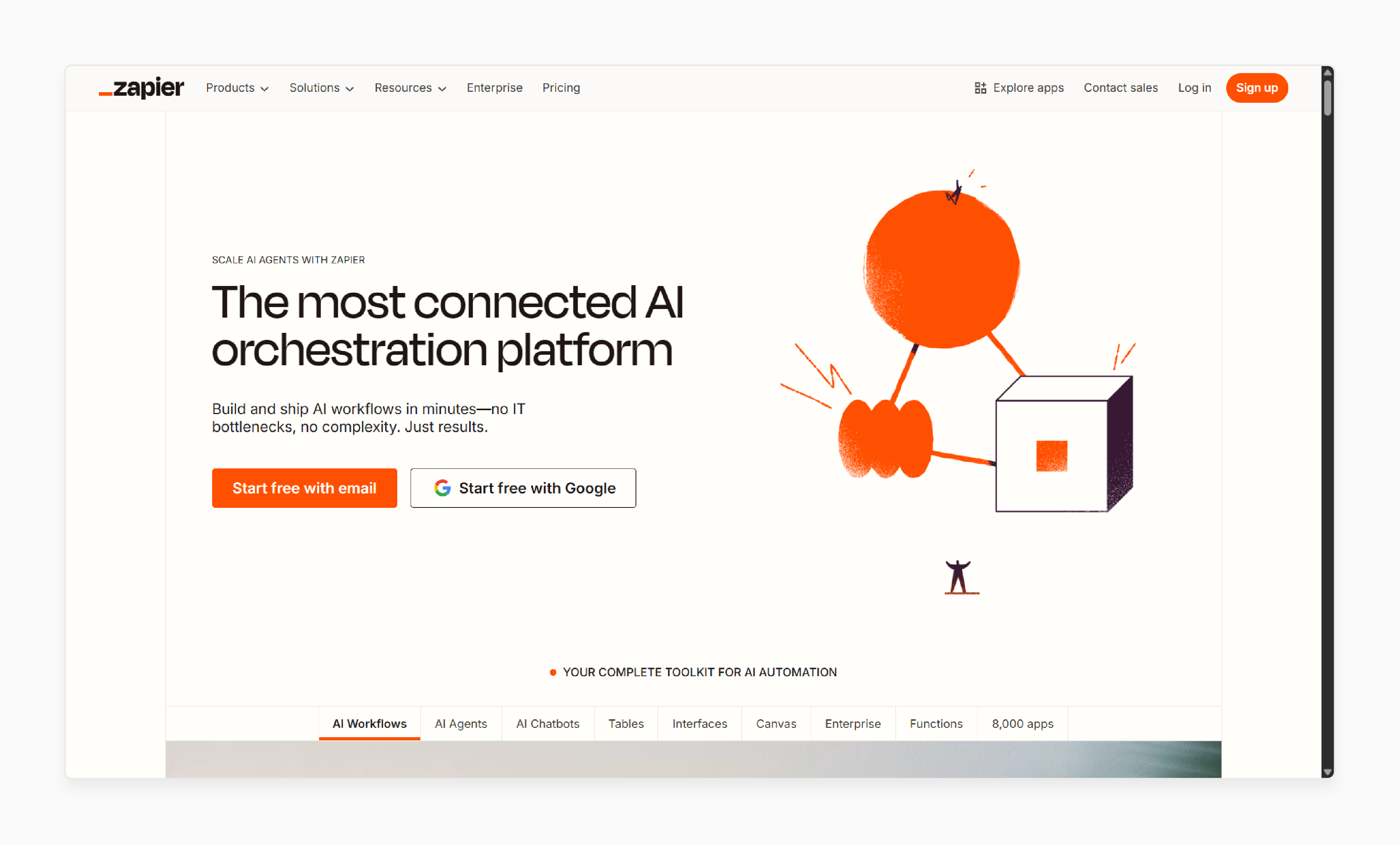
Zapier allows you to connect Magento with HubSpot. It uses automated triggers and actions of Zaps.
Key Features:
-
Prebuilt integration templates
-
5,000+ app ecosystem for extra tools, such as Gmail and Slack
-
Sync orders and triggers
-
Basic workflow automation
It is ideal for startups and small businesses. They need lightweight integrations that need minimal developer overhead.
3. Make
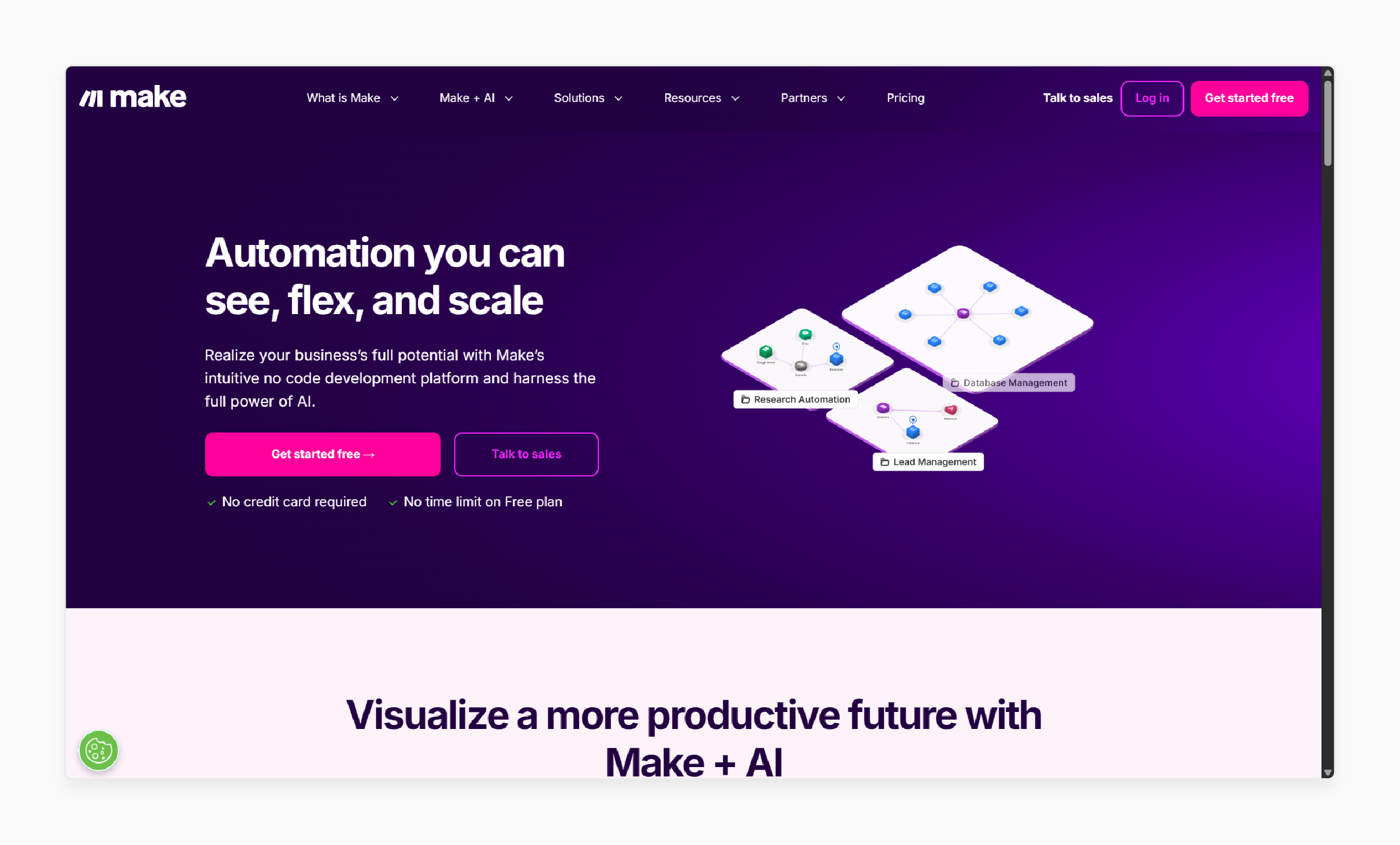
Make.com offers advanced drag-and-drop tools. It helps build complex workflows that connect Magento, HubSpot, and many other apps.
Key Features:
-
Visual editor with filters and delays
-
Real-time and scheduled data sync
-
Advanced routing and data manipulation
-
Extensive HubSpot and Magento modules
It is ideal for medium-sized teams with more complex automation needs. They also need limited developer resources.
4. SyncSpider
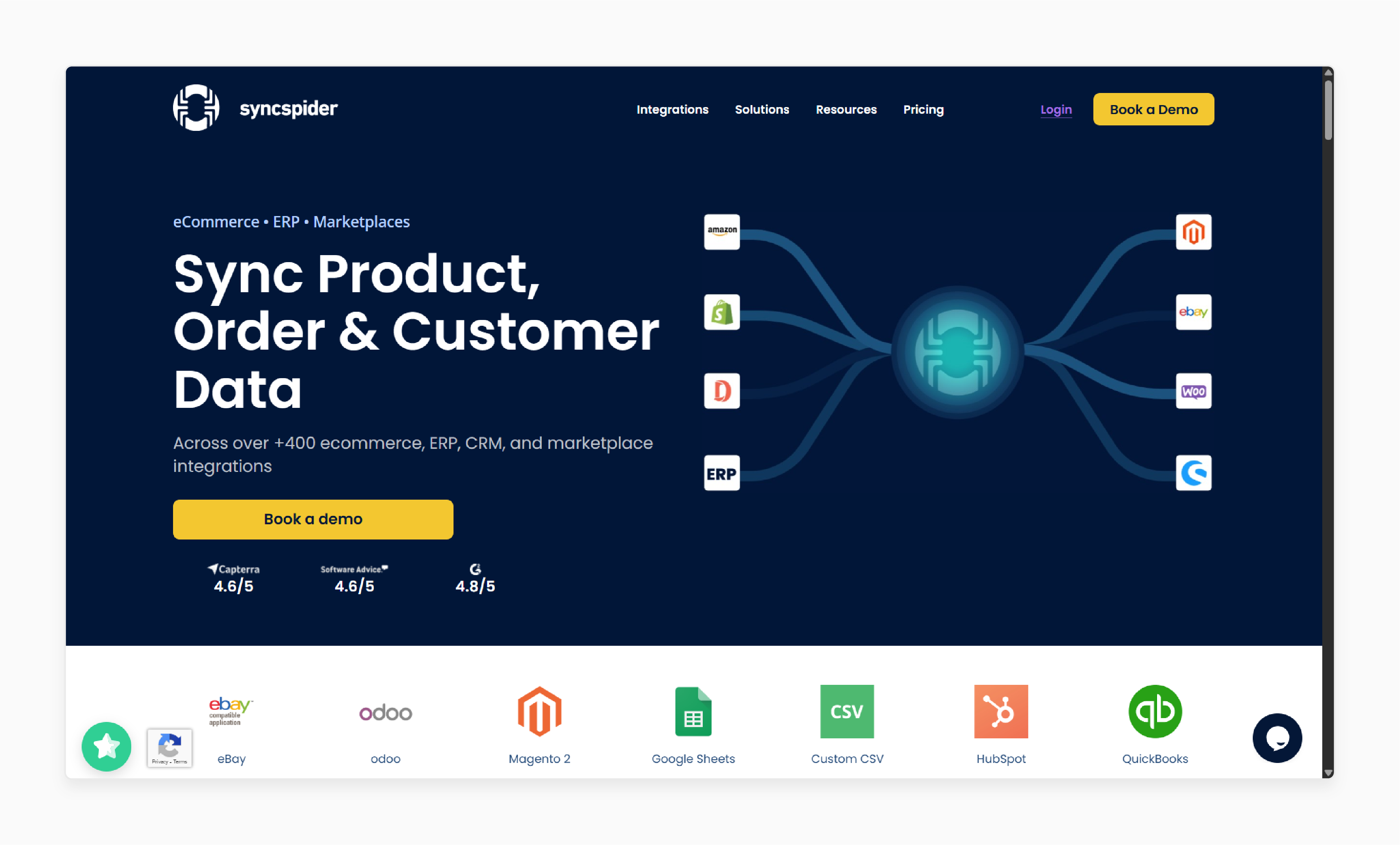
SyncSpider is for e-commerce. It integrates with Magento, HubSpot, Amazon, and WooCommerce. It supports scheduled or on-demand data sync.
Key Features:
-
Multi-store Magento support
-
Syncs product data and orders
-
Custom data mapping and filtering
-
Central dashboard to manage syncs
It is ideal for merchants with complex, multi-platform setups or multi-store Magento environments.
5. WebKul
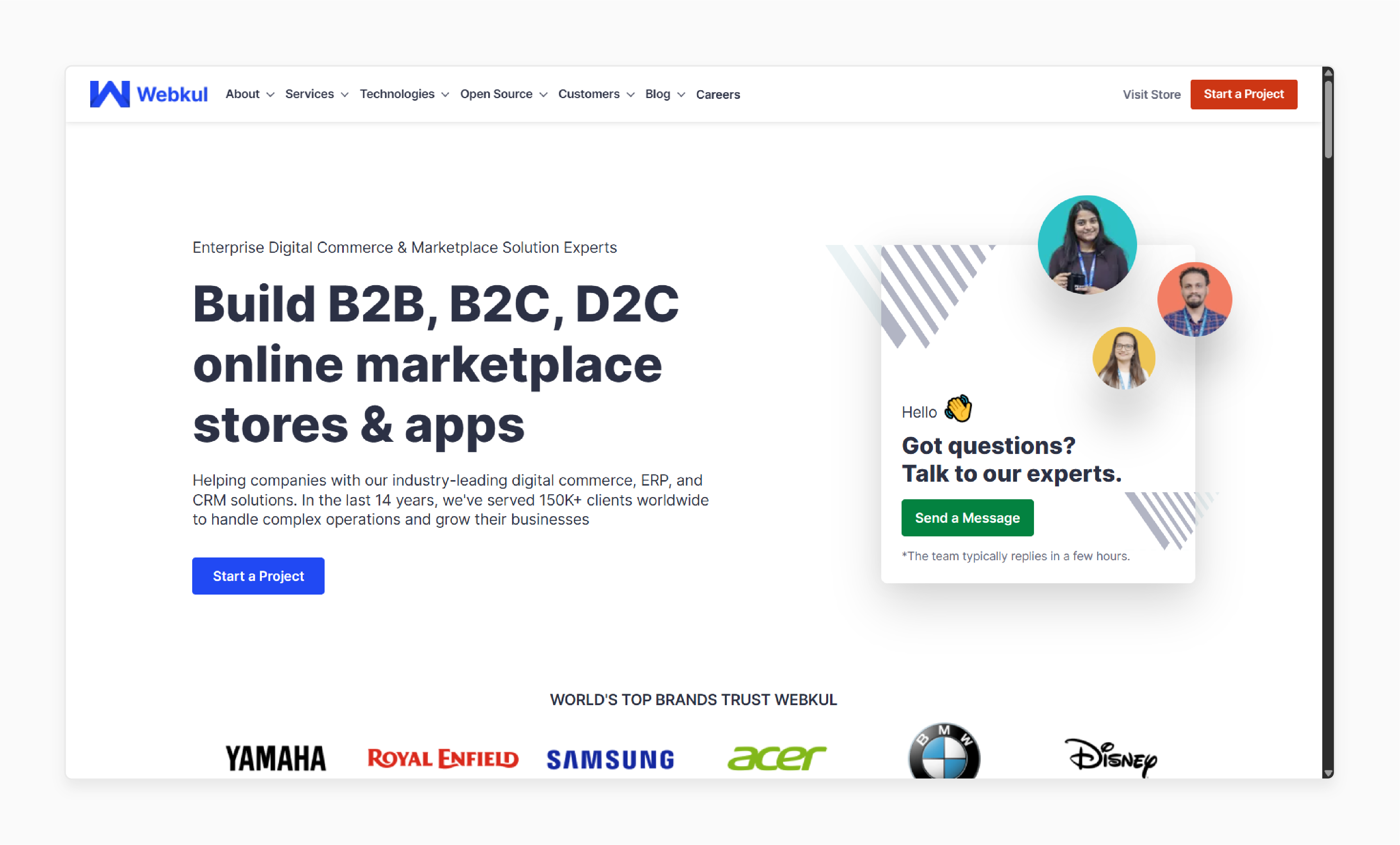
Webkul is a cost-effective extension. It allows basic data sync between Magento 2 and HubSpot. These include customer info and abandoned cart data.
Key Features:
-
Syncs customer records and abandoned cart details
-
Creates HubSpot deals based on Magento orders
-
Easy install via Magento Marketplace
It is ideal for small Magento store owners seeking basic synchronization. They don't need complex automation.
6. Custom API Integration

Custom API integration offers full control over your Magento–HubSpot integration. Custom development can connect your store to HubSpot in the way your business needs.
Key Features:
-
Tailored field mapping and sync logic
-
Custom triggers and conditional workflows
-
Built-in security and error handling
-
Can integrate extra systems
It is ideal for enterprises or brands with in-house development teams. They also seek a unique business logic.
Magento HubSpot CRM Pre-Integration Preparation
1. Define Clear Integration Goals
Before setting up any technical integration, understand why you are integrating. It shapes every other decision. The common integration goals include:
-
Sync customer and order data to HubSpot
-
Trigger cart abandonment or post-purchase campaigns
-
Track ROI from marketing campaigns
-
Segment customers by behavior
-
Automate personalized product recommendations
2. Audit & Clean Magento Data
Before syncing, ensure Magento data is clean and complete:
-
Remove duplicates, customers with the same email but different IDs
-
Normalize data, such as consistent phone number formats
-
Fill in missing key fields, such as addresses and email opt-in status
-
Check customer group classification
It helps prevent sync errors and avoids duplicate or unqualified contacts in HubSpot. It also improves segmentation and personalization accuracy.
3. Confirm Magento Version Compatibility
Some integration extensions only support certain Magento 2.x versions. Using an outdated or unsupported version can lead to broken sync or missing features.
-
Check the Magento version under Admin > System > Web Setup Wizard
-
Update to the latest stable release
-
Verify PHP and module compatibility
-
Backup before upgrades
It helps ensure that the extension or API connector will work and reduces security risks.
4. Check Your HubSpot Plan & API Limits
Not all HubSpot plans offer full CRM capabilities. You should understand your subscription features. Check for:
-
API call limits
-
Workflow automation availability
-
Limit on contact properties and lists
It helps prevent sync from failing due to exceeded quotas. It also ensures the use of all intended workflows.
5. Plan Your Data Mapping Strategy
Magento and HubSpot use different data structures. You need to plan how the fields in Magento map to HubSpot properties. The data to map includes:
-
Customer name and email
-
Orders total and status
-
Product name and category
-
Cart items and last updated time
Create custom properties in HubSpot for data that Magento doesn’t match. Use consistent naming conventions and avoid syncing sensitive PII unless necessary.
It helps prevent field mismatch errors and enables accurate reporting and automation.
6. Set Up API Access for Both Platforms
Magento and HubSpot use secure APIs for data exchange.
Magento API Setup:
-
Go to System > Integrations
-
Create a new integration with limited permissions
-
Generate Access Token
HubSpot API Setup:
-
Create a Private App for secure access
-
Generate an API key or OAuth token
-
Limit scopes, such as CRM and eCommerce
It prevents unauthorized access and ensures the exposure of only necessary data.
7. Use a Staging Environment for Testing
Set up a Magento staging instance and connect it to a test HubSpot environment.
-
Clone your Magento site
-
Create a test HubSpot sandbox
-
Run dummy orders and abandoned carts
-
Verify data flows as expected
Check for:
-
Are orders and customers syncing without duplication?
-
Are workflows triggered?
-
Are custom properties mapped?
8. Ensure GDPR & Data Privacy Compliance
When handling customer data, ensure it is compliant.
-
Get explicit consent before syncing personal data
-
Use double opt-in for marketing communications
-
Include privacy policy links on your checkout and registration forms
-
Log consent timestamps and IPs
It helps avoid legal issues and builds customer trust.
7 Future Trends and Developments
1. AI-Powered Personalization
Magento–HubSpot syncs will use AI and machine learning to:
-
Predict customer behavior, such as churn and next buy
-
Auto-segment contacts based on real-time data
-
Personalize product recommendations and retargeting ads
HubSpot’s AI lead scoring integrated with Magento buy data to focus on high-LTV buyers.
2. Conversational Commerce
Integration with AI chatbots and voice assistants via HubSpot will enable:
-
Real-time product recommendations
-
Cart recovery via chat or WhatsApp
-
Voice-enabled ordering and support using synced CRM data
ChatGPT plugins or voice AI could pull from Magento's catalog. Use HubSpot workflows for conversational engagement.
3. HubSpot’s CRM Expansion
HubSpot is expanding into:
-
Custom objects for more flexible eCommerce data models
-
Operations Hub for advanced data syncing and automation
-
Commerce features like quotes and payment links
Magento can push not only contacts and orders. It also pushes entire product catalogs and cart events into a more commerce-aware CRM.
4. Omnichannel & Unified Commerce
Buyers expect smooth experiences across online and physical stores. Magento–HubSpot integrations must support:
-
In-store buy data sync
-
Unified customer journeys across devices
-
Multi-touch attribution
73% of customers use various channels before purchasing. It helped sync data, which is no longer optional.
5. Privacy-First Marketing
With GDPR and AI Act regulations tightening:
-
Data sync tools must include consent logging
-
Real-time opt-out syncing between Magento and HubSpot will become mandatory
-
First-party data strategies will dominate
More brands will emphasize consent-driven personalization rather than cookie-based retargeting.
6. No-Code and Low-Code Integration Growth
Non-technical teams will demand:
-
Drag-and-drop sync builders, such as Make and Tray.io
-
Visual mapping of fields between platforms
-
Template-based workflows for abandoned cart recovery
The market will move from developer-heavy custom APIs to modular, reusable integration templates.
7. eCommerce + CRM Consolidation
As brands simplify tools, more businesses will:
-
Integrate CRM with ERP and marketing automation
-
Replace various point solutions with platforms like HubSpot. They offer all-in-one capabilities
The Magento–HubSpot sync will serve as the central data pipeline for operations.
FAQs
1. How long does it take to set up Magento HubSpot integration?
Setup time varies by method. Using a prebuilt extension like Magenest takes 1–2 hours with basic configuration. Custom integrations may take several days, depending on complexity and testing.
2. Can I sync historical data from Magento to HubSpot?
Most tools allow syncing of past customer and product data. You may need to trigger manual syncs or use import options. Ensure that the data is clean and well-mapped before importing.
3. Does the integration work with free HubSpot accounts?
Basic integrations can work with HubSpot's free plan. Features like automation workflows and advanced segmentation are in scope. Upgrading unlocks the full CRM and marketing capabilities.
4. How often does data sync between the systems?
Data can sync in real-time or on a schedule based on the tool used. Real-time syncing is ideal for timely campaigns and accurate CRM updates. Always verify sync frequency during setup.
5. What happens if the integration stops working?
If the sync breaks, new data won’t reflect in HubSpot until resolved. Most tools offer logs or alerts for troubleshooting. Regular backups and testing help prevent major disruptions.
Summary
Magento HubSpot CRM sync connects your store with HubSpot’s CRM. It helps centralize customer data and automate marketing workflows. The article explores the key points of the integration, including:
-
Syncs customer, order, and product catalog data in real-time.
-
Enables cart recovery emails, segmentation, and dynamic campaigns.
-
Supports tools like Magenest, Zapier, and custom APIs for flexibility.
-
Future trends include AI personalization, no-code tools, and unified commerce.
Simplify your marketing with smooth Magento–HubSpot integration. Pair it with managed Magento hosting to ensure optimal performance.





